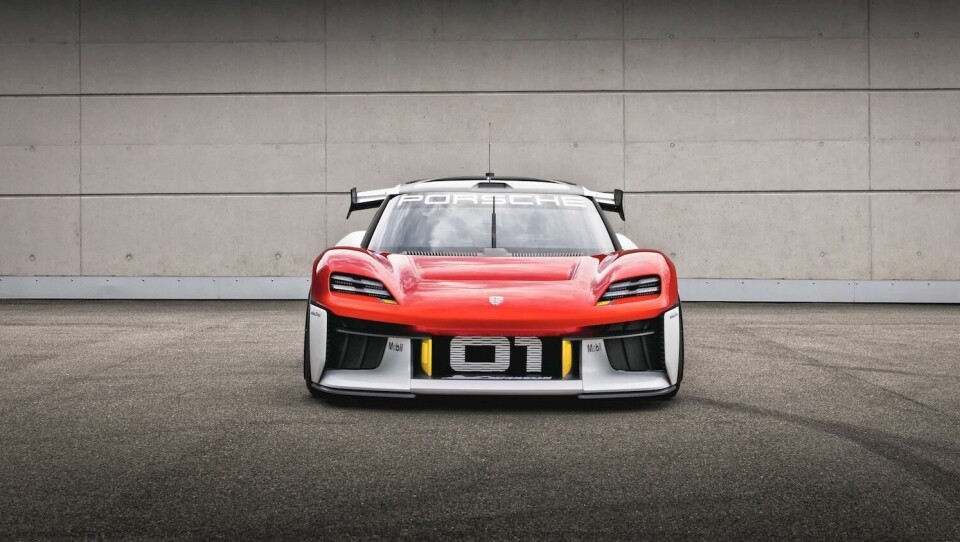
Porsche launches the Mission R Concept
The German marque unveiled the Mission R Concept at IAA Mobility in Munich – a project that suggests the brand will make a concerted push towards electrification
Not all designers get to make racecars. But for Porsche, a brand with a long and storied history in motorsport, it’s an essential part of the business. Porsche CEO Oliver Blume calls the current 911 GT3 cup car “the lifeblood” of the brand, claiming that no other racecar has even been built in greater numbers. Porsche took another step toward innovation in racing this week at the IAA motorshow in Munich with the debut of the Mission R, an all-electric concept aimed at customer sports car racing.
The Mission R is based on a Boxster/Cayman platform, modified for an EV with a battery pack behind the seat. We caught up with exterior designer Emiel Burki at the show for a walkaround and to hear how designing for the racetrack differs from designing for the road.
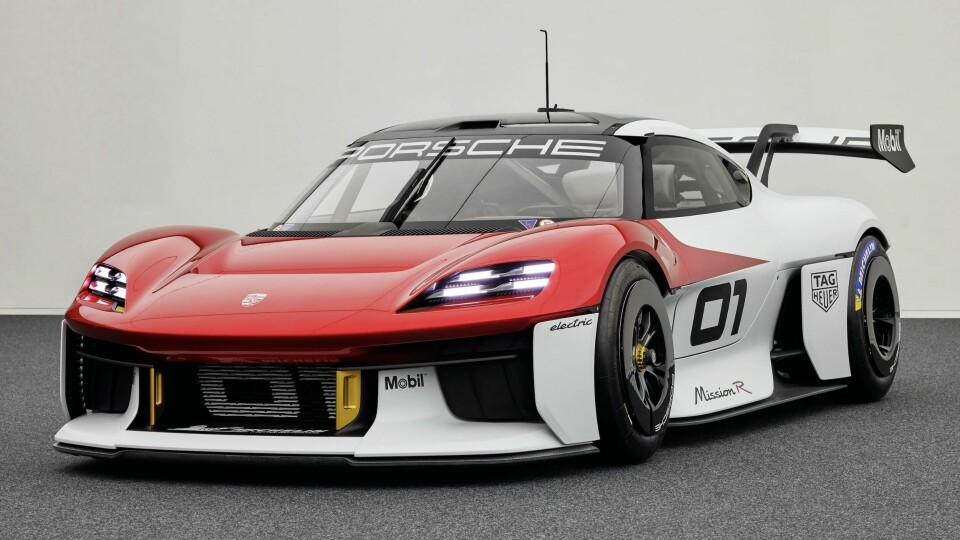
“[The design brief was,] it has to be a customer racing car. And a customer racing car at Porsche is always based on a normal car.” Burki says. Typically, he says, the lower area of the car is what distinguishes the road car from the racer. To highlight this distinction, the Mission R has a single horizontal line that runs from the rear wheel arch across the centre of the door and picks up again into the front fender. “Everything above this line is close to production car styling, so you have the normal flyline,” he says.
“Really the main thing for me is the proportion, that it’s a small sports car again,” Burki tells us. “As soon as you have the proportion and the typical Porsche language, you start doing the details and that’s where it starts to become a race car.” The main inspiration for those details was the 911 RSR, the mid-engine racecar developed for Le Mans in 2017. “It is about aerodynamics, getting the air out of the wheelhouse, guiding it again towards the rear brakes and behind the rear wheel to get more pressure on the diffuser in the back.” As such, the front and rear diffuser area were taken from the RSR and scaled to fit the Mission R.
“On the body side, I wanted a maximum shape and maximum air outtake from the front wheel, so that basically gives the sculpture. “Everything underneath I waned to give maximum race car feeling, with air out-takes and intakes and a lot of sculpture that really gives the cabin this round feeling.”
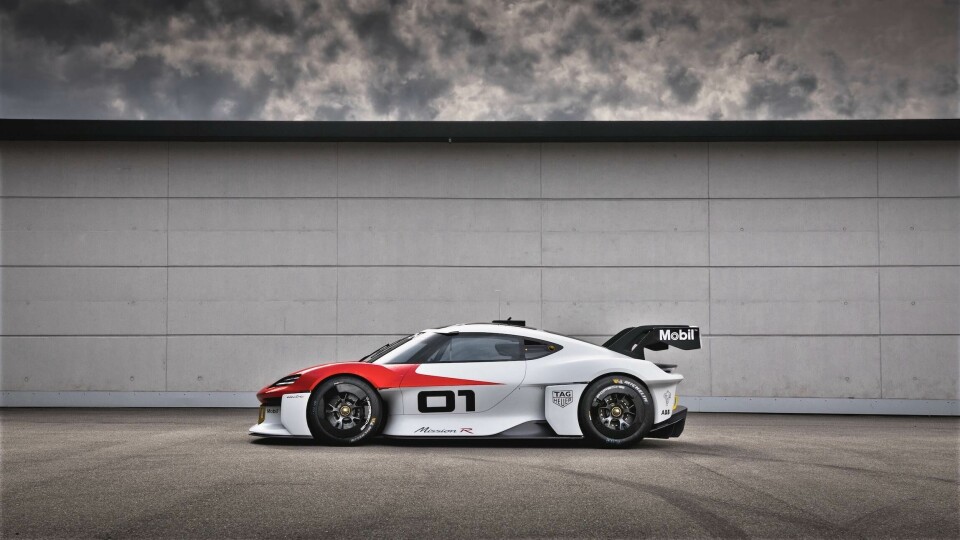
Instead of a rollcage inside the cabin, carbon-fibre structural reinforcements are integrated into the roof, acting as an exoskeleton. Other race-specific features include a jack access port and quick-release tabs for the roof panel and front nose, for easy access in case of a crash. “That’s where you start to have fun with race cars, and then there’s these things you have to integrate like the emergency out and fire extinguisher,” Burki explains. “You also have the antenna area and roof, and there’s a light there that tells you that you can enter the car and start the car, also a pitot tube sticking out to measure the air pressure to know your speed. What also makes it a race car is the braking light and bad weather light.”
The rear wing houses a drag-reduction system (DRS), a form of driver-adjustable bodywork that allows for short bursts at maximum speed. “That’s one area where we had some fun,” he says. “I took the mechanics for the wing from another project which is not finished yet, and I completely redesigned the surroundings; we milled them completely out of aluminium so we had more freedom to integrate the cylinder and to integrate the DRS.”
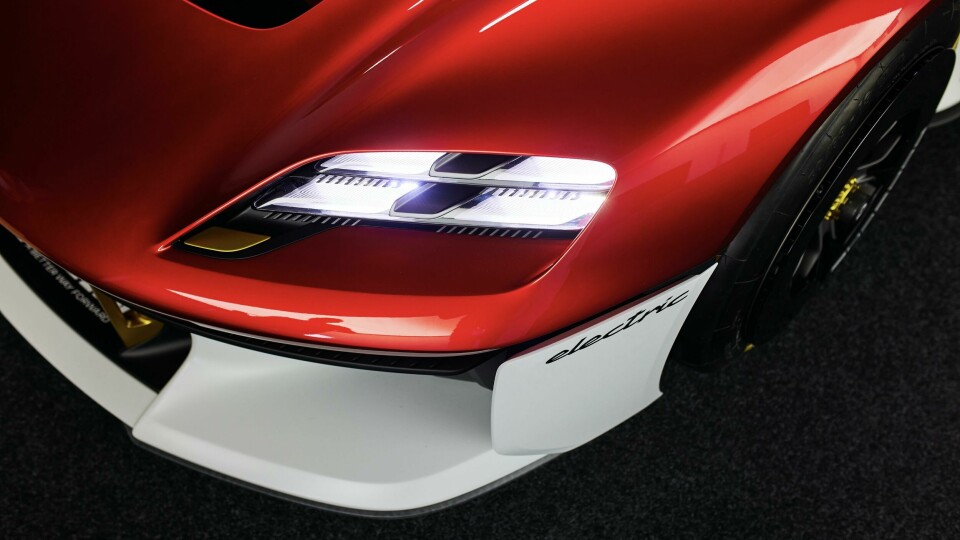
The interior design places all controls easily within the driver’s reach, with a screen above the steering column that displays images from the side-view cameras. Another touch display can call up the driver’s biometric data. “We did a little bit of ping-pong in the interior because they had to fit in the guy with the helmet,” Birki says. “And you know exterior designers, they always make the car too low. So that’s where you always have a little bit of discussion.”
Burki says he doesn’t know exactly how close the final race car will be to the concept, but he surmises it will be similar. “But then again, we didn’t care so much about regulations, so FIA sometimes says things like, ‘yes you can open up the wheel arch but only so much,’ and these are some things you have to do again.”
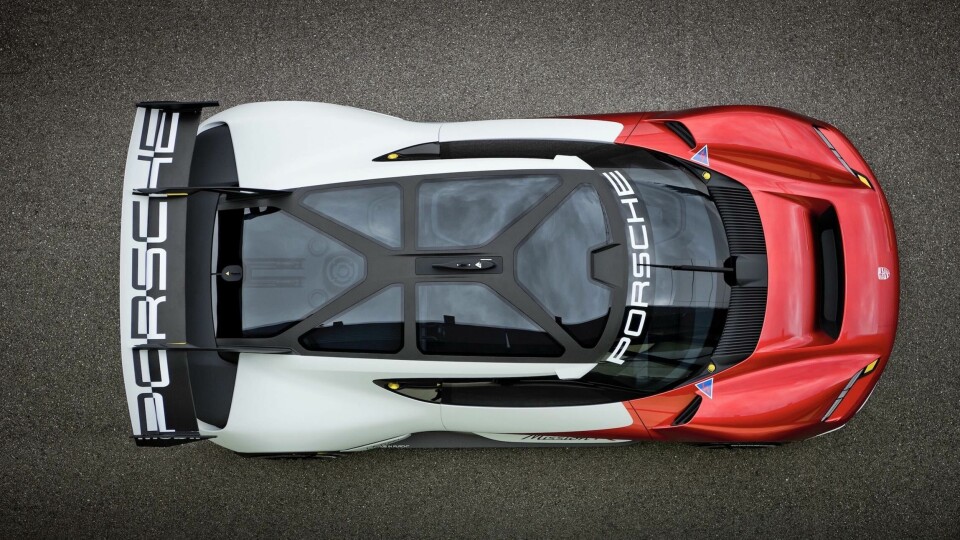
Although the Mission R puts the focus on racing, Blume says that, as with most Porsche studies, the concept is based on a road car that will eventually go into production. Considering the Mission R’s platform, it’s not hard to imagine that we’ll see an all-electric Boxster-Cayman lineup replacing the current flat-four petrol cars. It’s unusual for Porsche to show a racing version of a new model first, but considering the skepticism many racing enthusiasts have for EVs, it’s a clever strategy to convert naysayers before the road car hits the stage. In any event, it’s a clear indication that Porsche is taking its push toward electrification seriously, whether or not we’ll see the Mission R conquer the track.


















